There are many reasons why people don’t accept a diagnosis of mental illness.
I received an email the other month from someone whose spouse had psychotic experiences and was later diagnosed with bipolar disorder. However, the spouse believes they had a powerful spiritual experience.
The spouse has agreed to see a psychiatrist, and continues to see their counsellor, but won’t take medication.
I’ve been in that very position, refusing both the diagnosis and medication. Understandably. The experiences I’ve had (two, quite recently) from a science approach typically are called psychosis. I like to call it non-shared reality. Regardless how you describe them, elements of these experiences are profound for me.
I’ve always had difficulty with the ‘either/or’ perspective. Either my experience is an illness as seen through the medical model OR it’s strictly a spiritual experience as seen through alternative perspectives such as the anti-psychiatry movement or transpersonal psychology.
What I experienced was more nuanced. To cavalierly categorize it as either only alienates me from potential help.
But what to do?
In my case, I encountered a brilliant psychiatrist who helped me understand what I experienced could be both. Or, more accurately, they could exist simultaneously.
I had undergone (and continue to undergo) spiritual experiences meaningful to me. While at the same time I have a mental illness that would benefit from some medical assistance.
I’ve come to understand the diagnosis of bipolar disorder, anxiety and psychosis does not diminish the importance of these personally transformative events. Mental illness and spiritual awakening are not mutually exclusive.
This was life-changing for me. It allowed me to embrace the spiritual path I held so dearly while also accepting much needed treatment for psychiatric disorders which were, in no uncertain terms, ravaging my life and relationships.
I am of the belief, for some people, we need to blend both approaches, spiritual and medical. If either one excludes or denigrates the other, it won’t be helpful. For me, the litmus test is this: does the person have the quality of life they want? Is the approach they are using causing them more suffering or less?
I wanted to be someone who didn’t need to take medications. But I’m not that kind of person. Some people don’t need to or can manage without. For me, I needed to be open to the possibility of needing meds and not needing them. I needed my support circle to be on board with that too. Or to be honest with me about any bias they had. That built trust. Trust in the end is the best bridge to help build a life worth living.
Allowing for ‘Both’ rather than forcing an ‘Either/Or’ stance made getting better, well…better. I am able to comfortably hold both my spiritual and medical model perspectives. It’s a fine line, but that’s fine with me.
The following are resources to help those of you grappling with the ‘either/or’ situation. Whether you are supporting someone who identifies only with the spiritual, even to their detriment, or for those of you given a psychiatric diagnosis and trying to reconcile it with your profound experiences, I hope these shed some light and offer insight.
1. Visions Magazine – This edition focuses on spirituality and how it related to mental illness. Visions is an award-winning magazine that brings together many views on mental health and substance use.
https://cmha.bc.ca/wp-content/uploads/2016/07/visions_sprirituality.pdf
The following I wrote or created in partnership with others. Each describe in different ways my journey integrating both a spiritual perspective and medical model approach to help my life come into balance so I could begin to flourish.
2. Bridging Science and Spirit – a 7-minute documentary https://www.youtube.com/watch?v=sXq9B9a3sOI
3. Does God* Have A Place In Psychiatric Treatment Plans? – blog
Note: I use the word ‘God’ but don’t mean it in the strictly religious sense, per say. I use it interchangeably with Love, the Divine, Universe, Spirit, Goodness, what-have-you. Please replace it with what you are most comfortable with.
4. I Went Off my Meds to be More Spiritual: Spiritual Growth and Psychiatric Medication – an oxymoron? https://victoriamaxwell.com/i-went-off-my-meds-to-be-more-spiritual/
5. Crazy for Life – My theatrical keynote (aka one-person stage show) focusing on my struggle to reconcile the mental illness diagnosis with profound spiritual experiences. In it, I describe how medication, for me at least, needs to be part of my wellness tool box. Not the only one, but one nonetheless. View a clip from the show here (watch at 1min 25sec): https://www.youtube.com/watch?v=z-CU5DaOl74&t=7s Also available for download purchase. https://victoriamaxwell.com/product/crazy-for-life-a-story-about-accepting-help-for-mental-illness/
Have you had spiritual experiences within your mental illness? Do you think it is one or the other? I’d love to hear from you to learn about how you made sense of it.
© Victoria Maxwell

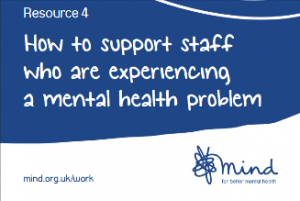 Mind:
Mind: 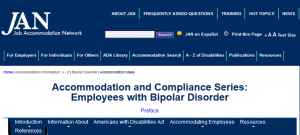 Job Accommodation Network (JAN)
Job Accommodation Network (JAN)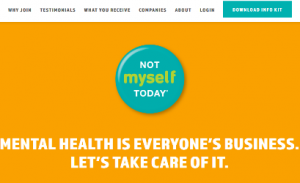 Not Myself Today:
Not Myself Today: 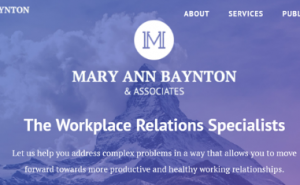

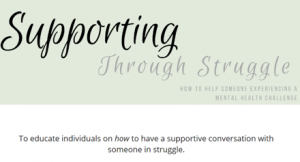 Hayley Peek Consulting:
Hayley Peek Consulting: Provides various free resources such as tools, training, strategies, assessments for employers, staff, managers to improve workplace mental health.
Provides various free resources such as tools, training, strategies, assessments for employers, staff, managers to improve workplace mental health. 